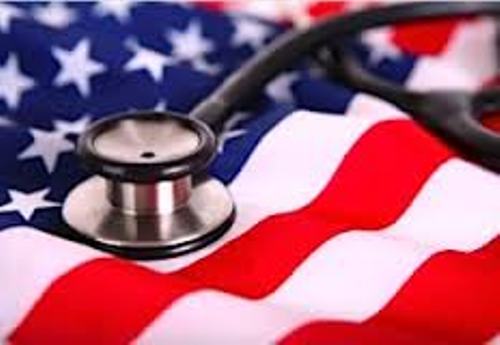
When is comes to healthcare and the overall health of a population one would think that the USA would rank near the top. Don’t let the golden rule blind your thinking. Even though the United States ranks at the top in healthcare per capita expenditure the results are nothing more that fools gold. At a per capita expenditure of $8508.00 according to Reuters. Although, we spend more we are far from the top on results. The life expectancy in the US ranks 26th in the world with an average expectancy of 78.7 years.
When it comes to overall health the US comes in 33, just ahead of Bosnia and Herzegovina. Are you curious who the top ranking countries were? Singapore, Italy, Australia, Switzerland and Japan are the top five in that order. It also does not surprise me that Israel ranked 6th in the list.
Okay, so we don’t do so well in overall health but we sure do have some highly advanced technology when it comes to emergency care and trauma.
There is no question that when it comes to emergency care and trauma America is certainly at the top of the list, Right? I used to think so. According to research done by the American College of Emergency Physicians ranking care in several categories including access to care, quality and patient safety as well as disaster preparedness the overall grade of a D+ was given which was downgraded from just five years ago. Some of this was explained by and increase in defensive medicine as well as not enough prescription drug monitoring. In 2011 there were over 1.5 million visits to the emergency room for misuse of prescription drugs. Unfortunately we do rank number one in infant mortality with a rate of 10.4%.
It is also interesting to note that within the top ten industrialized nations the US ranked dead last in healthcare satisfaction surveys, with an approval rating of 11%. It’s true that in many cases of trauma the US has Star Wars like technology for saving lives and yet when it comes to wellness of the population the US fails miserably.
It is true we need to reform out system but we do not need to pump more money into it. We need to rethink the way we are presenting health. We need to take a deeper look at what we are teaching our children about food, lifestyle and healthy living.
When we begin to take responsibility for our own health and our own lifestyle we will slowly be able to restore health in America. The USA can not expect to overcome the damage by adding more chemicals to an already over medicated population. We can not expect our system to work if we continue to promote poor lifestyles. Our population will continue to decay if we continue to feed ourselves, GMO nutrient depleted crops, chemically enhanced water and stick our heads in the sand by allowing chemical giants influence the food industry.
Wake up America. We have been slumbering too long. Certainly, there are a number of pharmaceuticals which have been helpful. However, they do not form the foundation for sound living. There have been great advances in drug free solutions to most health problems including cancer. The research is well documented.
It will take all of us to take a few small steps forward to create the changes needed. Commit to taking one more step to living a healthier lifestyle. Support your local farmers markets and growers. Shop at markets that support wholesome and natural manufacturing processes. May you have a healthier tomorrow.
Yours for Better Health, Dr. Shapero
EXPECT MIRACLES – WE DO
www.premierhealthcaresc.com
-
Organization for Economic Cooperation and Development, Paris, France, OECD Health Data, 1993; OECD Health Systems: Facts and Trends, 1993.
2. Remaining statistic charts listed in Where We Stand, by Michael Wolff, Peter Rutten, Albert Bayers III, and the World Rank Research Team (New York: Bantam Books, 1992)
3. Health Affairs, vol. 9, no. 2, cited by Steven Randall, Jim Naureckas and Jeff Cohen in The Way Things Aren’t: Rush Limbaugh’s Reign of Error (New York: W.W. Norton & Company, 1995), p. 65.
4. Jeff Cohen and Norman Solomon, Through the Media Looking Glass: Decoding Bias and Blather in the News (Monroe: Common Courage Press, 1995), p. 81.
5. The Way Things Aren’t, p. 66.
6. This was the finding of a county-by-county national survey conducted by the National Cancer Institute in 1975. Cited in “N.J.’s Chemical Belt Takes Its Toll: $4 Billion Industry Tied to Nation’s Highest Cancer Rate,” Washington Post, February 8, 1976, p. A1.
7. Aaron Antonovsky, “Class and a Chance for Life,” in Inequality and Justice, Lee Rainwater, ed., (Chicago: Aldine Publishing Company, 1974), p. 177.
8. S. Leonard Syme and Lisa Berkman, “Social Class, Susceptibility and Sickness,” American Journal of Epidemiology 104, no. 1 (July 1976), pp. 1,4.
9. Berkeley study: George A. Kaplan and others, “Inequality in income and mortality in the United States: analysis of mortality and potential pathways,” British Medical Journal, Vol. 312 (April 20, 1996), pp. 999-1003. Harvard study: Bruce P. Kennedy and others, “Income distribution and mortality: cross sectional ecological study of the Robin Hood index in the United States,” British Medical Journal, Vol. 312 (April 20, 1996), pp. 1004-1007.
10. Jeffrey Reiman, The Rich Get Richer And the Poor Get Prison (New York: MacMillan Publishing Company, 1990), p. 75.
11. Quoted in Stephanie Coontz, The Way We Never Were: American Families and the Nostalgia Trap (New York: HarperCollins, 1992), p. 270.
Please feel free to share this, our goal is to pass along helpful information to make our world healthier and happier.





